Pelecyphora strobiliformis

![]()
It is one of the slowest growing species of Mexican cacti. Generally solitary that sometimes forms small groups, it has a very compact spherical-depressed stem, about 3 cm high and up to 7-8 cm wide, covered with small triangular, lumpy tubercles folded upwards to adhere to the stem, which give the plant the appearance of a pine cone, hence the name 'strobiliformis'.
Each tubercle bears an apical areola, with small slender thorns which, together with a thick fluff remain on the plant only in the apical portion, with a protective function.
The inner part of the tubercles is stiffened by a thickening of the epidermis (suberification), while the exposed part is crossed by a small vertical excrescence (carena).
At the axil of these scaly tubercles the flower is formed, which comes out to open up. The small fruit remains protected from the tubercle until it is ripe.
In summer, when the rains hydrate the plants causing the stem to swell, the tubercles tend to open up enough to expose the ripe seeds to the dissemination by the rain (hombrochoric dissemination), wind (anemochoric dissemination) or ants (entomochoric dissemination).
| Botanical name | Pelecyphora strobiliformis (Werderm.) Frič & Schelle ex Kreuz. |
|---|---|
| Synonyms | Encephalocarpus strobiliformis A.Berger |
Natural habitat
This species is widespread in areas of low hills on stony ground, in full sun or among thorny shrubs, agaves and yucca.
From an ecological point of view the species is defined as ‘hemicryptophyte’ due to the fact that its vegetative apex is at ground level or a few centimeters above it. Typically it is found in points where there is a certain amount of fine soil, substantially clay and silt, which is collected between limestone rocks of all sizes.
State of preservation
The first known populations of this species have long been plundered due to the strong market demand, so the species is included in Appendix 1 of CITES. Currently the species is stable, with a number of specimens estimated at over 100,000.
Cultivation
Very robust, Pelecyphora aselliformis requires sole mineral soils and wintering at temperatures close to 0 °C. Resistant to cold, easily withstanding temperatures up to -10 ° C. If grown in full sun it widens and does not grow excessively in height. In the height of summer it fears sunburn if it is placed in sunny and poorly ventilated places.
Plants of this species are easy to maintain in their natural appearance if kept in crushed marl.
Plant diseases
Well cultivated specimens with natural techniques are almost unassailable by common parasites, thanks to the production of a thick cuticle. Occasionally the presence of the mealybugs is found in the points of the stem less exposed to sunlight.
 Specimen photographed in the wild during the winter stasis period. The stem is considerably retracted.
Specimen photographed in the wild during the winter stasis period. The stem is considerably retracted. Plants of different ages, cultivated with natural methods.
Plants of different ages, cultivated with natural methods.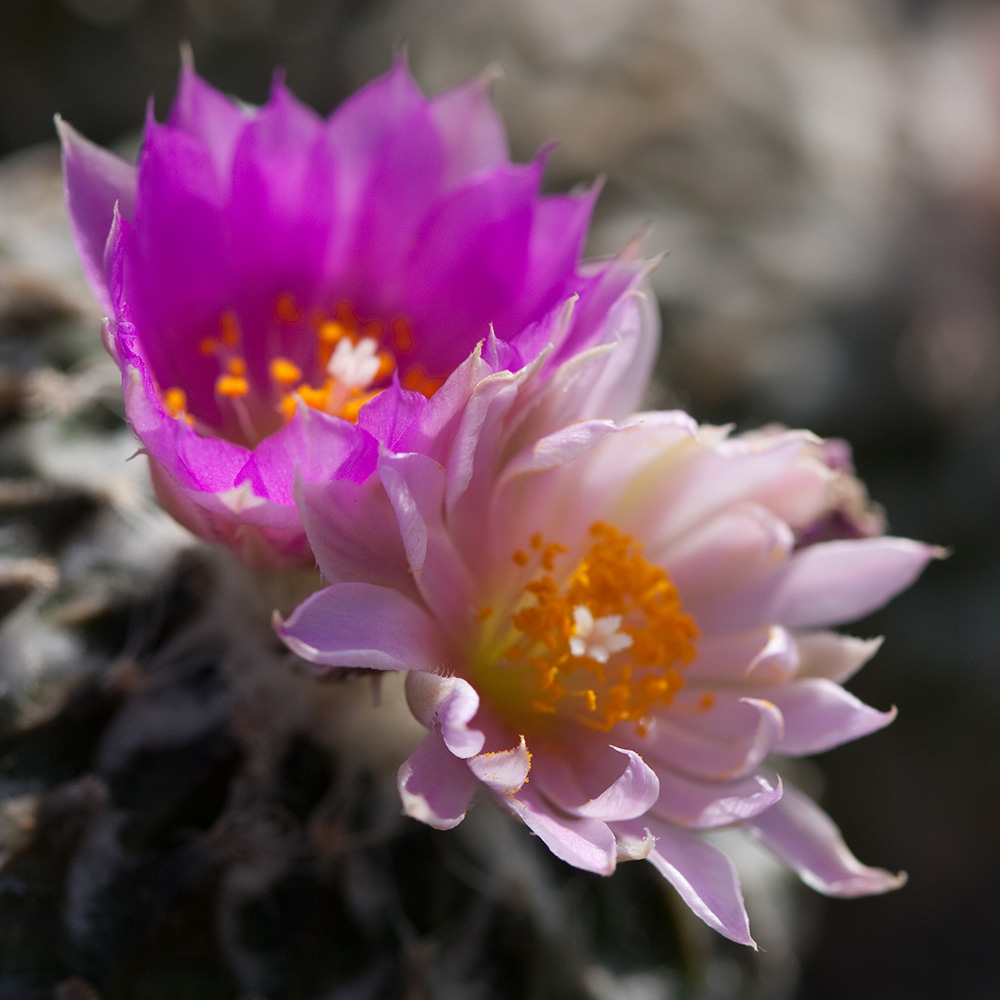 Detail of different colored flowers carried by the same plant.
Detail of different colored flowers carried by the same plant.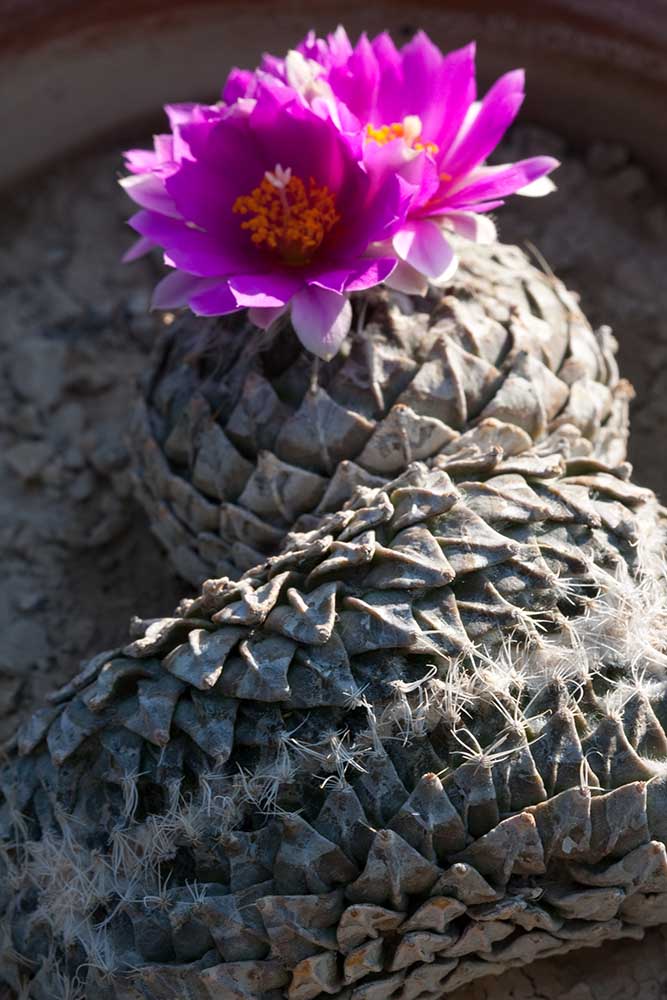 Crested specimen of Pelecyphora strobiliformis.
Crested specimen of Pelecyphora strobiliformis. Detail of the stem of Pelecyphora strobiliformis, which shows the tubercles similar to the scales of a closed pine cone.
Detail of the stem of Pelecyphora strobiliformis, which shows the tubercles similar to the scales of a closed pine cone.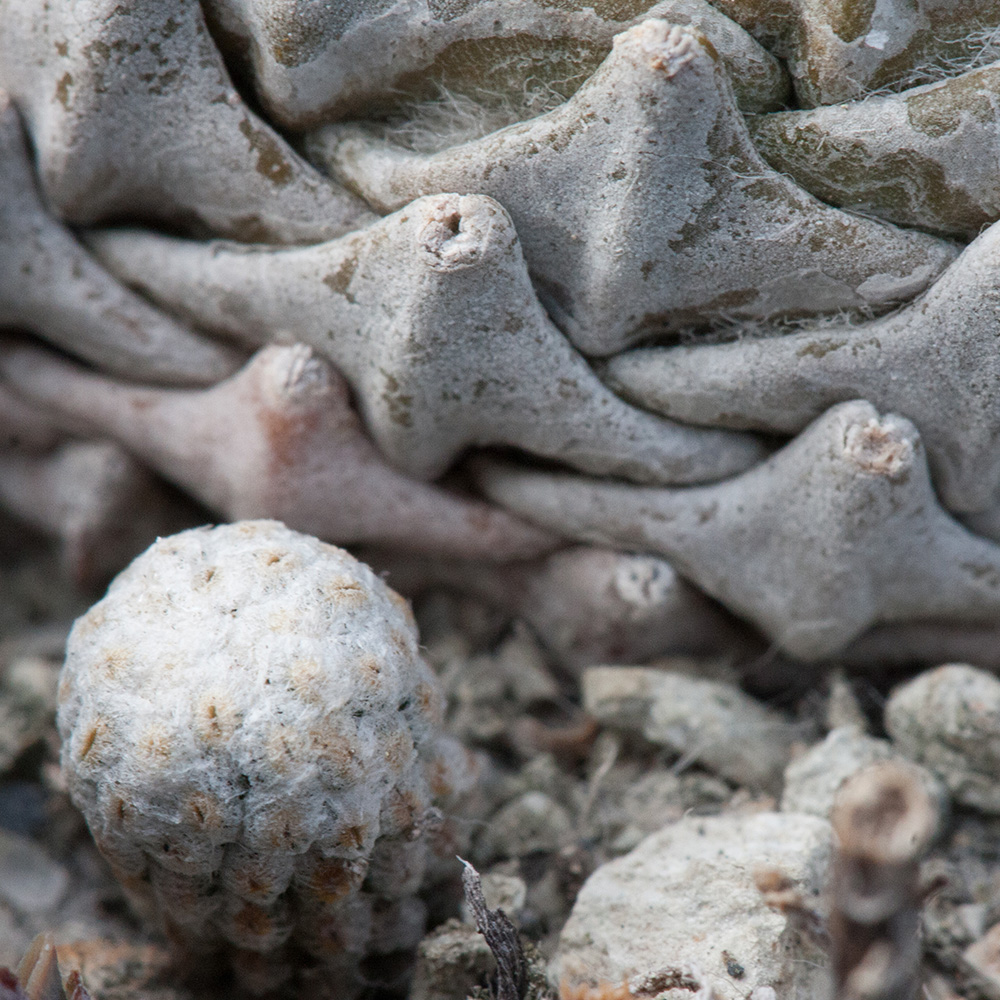 Detail of a young plant of Pelecyphora strobiliformis born at the base of the mother plant.
Detail of a young plant of Pelecyphora strobiliformis born at the base of the mother plant.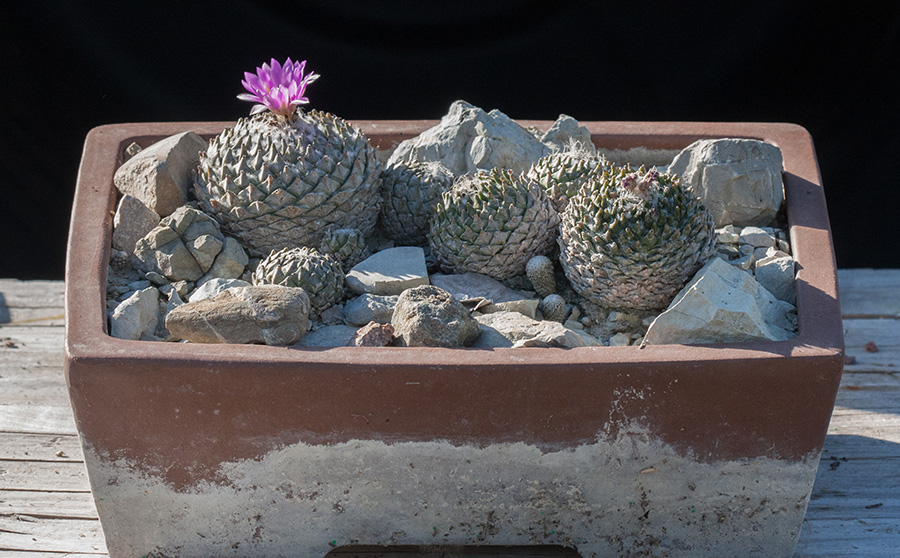 Group of plants cultivated with natural techniques in pots of stoneware.
Group of plants cultivated with natural techniques in pots of stoneware.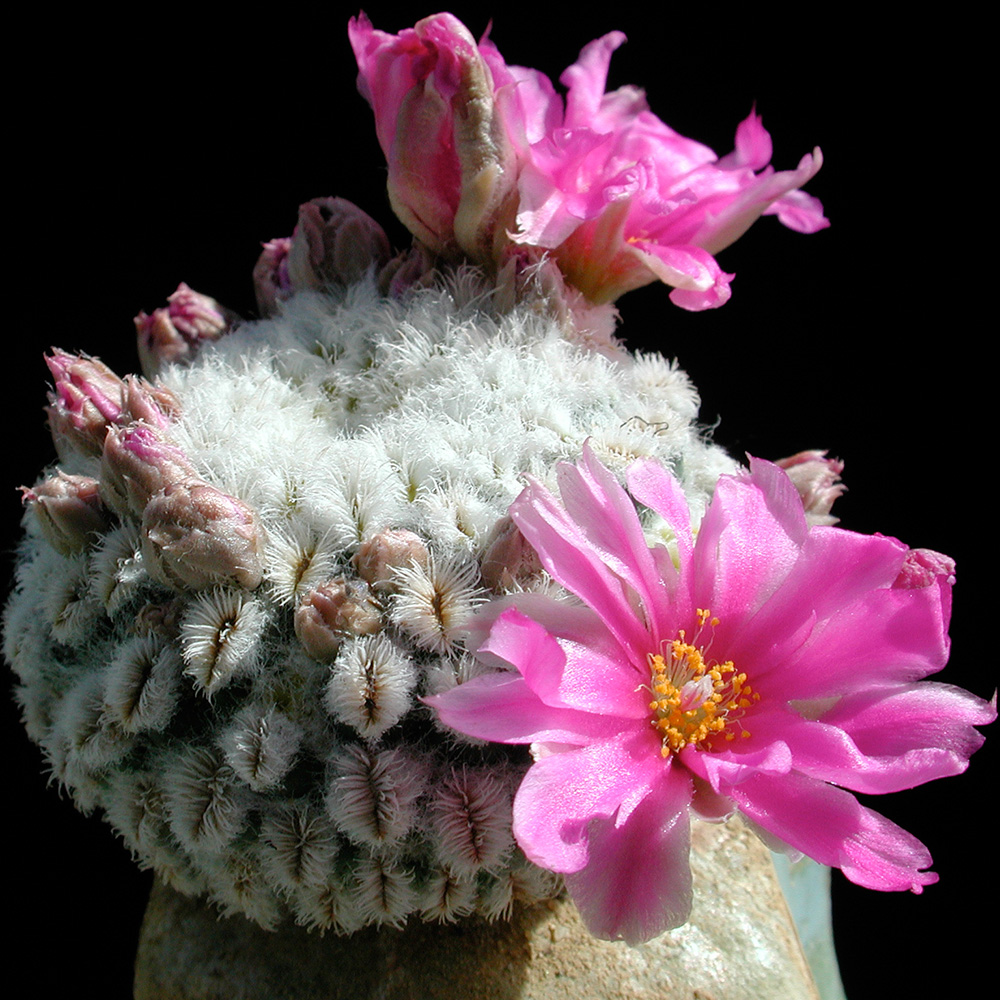 Cultivar © Fluffy White selected by us. Detail of lateral flowers.
Cultivar © Fluffy White selected by us. Detail of lateral flowers.